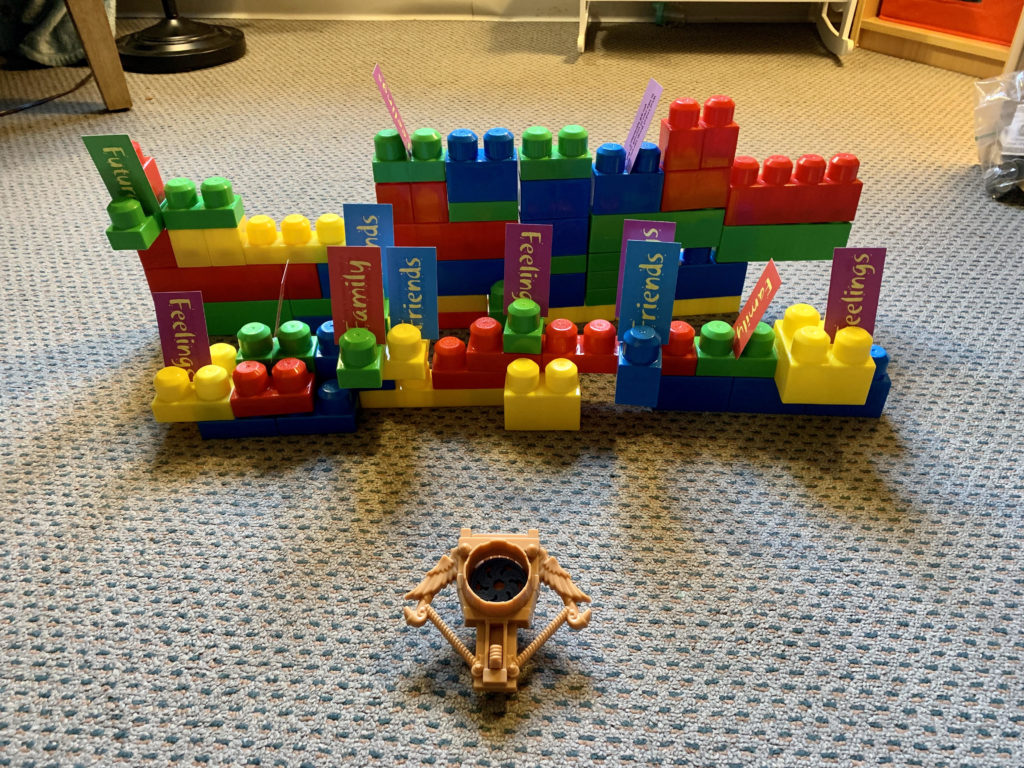If you work with kids, chances are you’ve heard of the video game, Fortnite. Fortnite has gotten a lot of backlash due to its addictive nature, and the aggression and competitiveness that comes with online gaming. Fortnite in the Playroom is designed to bring the child’s interest into the playroom while also teaching skills such as strategy, positive competition, frustration tolerance, and patience. The goal of this intervention is to increase self-esteem, experience cooperation and teamwork, and promote positive interactions during the game.
Materials Needed
- Something to throw or launch (such as a slingshot, disc launcher, or just a small ball)
- Large building blocks
- Cards from a therapeutic game (ex: Kit Kat’s Toolkit for Scary Memories, Lifestories, or Ungame cards)

Step One- Build the Fort
Dialogue: In this game, we are going to build forts. Instead of attacking each other or each other’s fort, we are going to take turns using this launcher (or throwing this ball) to knock cards off the fort. If you answer the question on the card, you get to keep the card as a point.
Tip: Begin by letting the child tell you about the game and what he/she likes about the game. You can use the time building forts to have a dialogue about what makes a sturdy fort (a strong support, sturdy walls, a good foundation, etc.) and use metaphors to discuss safety and security.
Step Two - Place the game cards on the fort
Dialogue: Now that we have built our forts, we are going to place cards on top of the fort or any place you can find to put a card. These will be our targets.
Tip: By giving half of the cards to the child to place on the fort, it can be a great way to collaborate as a team.
Step Three - Take turns launching the discs or ball to knock cards off the tower.
Dialogue: Now that we have our forts built and our cards in place, we are going to take turns shooting the cards off the tower. Let’s each take 3 turns and then switch and let the other person have a chance.
Tip: This can be great practice for taking turns and cheering each other on. Usually in competitive online gaming, children don’t experience positive feedback. You can also take this opportunity to reflect frustration the child may be experiencing, or demonstrate/model regulation skills.
Debriefing
The cards answered by the child may promote further discussion. It could be a good idea to let the child hang on to the question cards throughout the game, and count them as points at the end. This can lead to further discussion of the cards. For example, “The question you answered about feeling picked on at school, I’m curious, tell me more about that.” If the child experienced any frustration during the activity, now would be a good time to ask the child about how they felt when they missed the target.
If you have enough time for another round, add more cards to the fort, or destroy the fort and start again!







